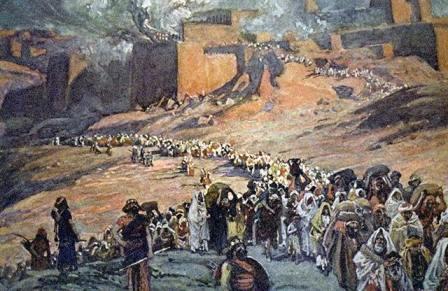Home | About Us | Directions | Bulletins | Sermons & Audio | Cross Of Christ Studies | Classes | Student and Parent Resource Page | Dangers Facing the "Non-Traditional"
Click Here for the Latest Edition of the Auburn Beacon

The Beacon is sent weekly

Hear Buddy Payne
Speak in Auburn, Alabama
All Joy and Peace in Believing
![]()
![]()
Our God He is Alive
(Evidences from DNA)
![]()
![]()

The Final Stages of Israel's Apostasy
Adult
Bible Class in Progress - Sunday
Morning 9:30 - Auditorium Class
Planning to Visit Us?
What
to Expect
Current Class
Information
Thoughts To Ponder
Facts are facts and will not disappear on account of your likes.
You will need
the following viewers
to view many of the
files on this site.
![]()
Click here to
download
Adobe Acrobat Reader
![]()
Click here to
download
Microsoft PowerPoint Viewer
University church of Christ
Assembly Times
Sunday
Bible Classes (9:30)
AM Worship (10:20)
PM Worship (6:00 pm)
Wednesday
Bible
Classes
(7:00 PM)
Location
449 North Gay Street
Auburn, AL 36830
Click Here for Specific
Directions
These Things Became Our Examples
by Terry W. Benton
So much talk about “examples are not binding” is really not helping brethren understand the reason why examples are very important. It did not matter to Paul about whether the Old Testament contained “narrative” or “story” (who would ever dispute that?). Yet, as he read the stories embedded in the Old Testament, he found things that “became our examples”
(1 Cor.10:6). The mistakes of Israel were examples NOT to follow in the church. He said “they happened to them as examples and they were written for our learning” (v.11). Get this! Christians are to learn from the examples embedded in the stories of the Old Testament. That would especially be so in the New Testament as well. From examples we learn what is NOT acceptable to the Lord, and from other examples we learn what IS acceptable to the Lord.By the same token, if Paul “ordained” things in “all the churches” (1 Cor.7:17), one of which was to learn from examples, then what we see in the uniform practices of the early churches would be examples for us to follow. Paul urged the Corinthians “not to think beyond what is written” (4:6). That means to get all your ideas and information from this source and don’t even desire to listen to something if it is beyond what is written.
One thing that is written is “imitate”(follow the example of) Paul (1 Cor.4:16), and let yourself be reminded of his “ways in Christ”(which includes his approved examples) (v.17). The reason we can follow the apostles “ways in Christ” is because they had “the mind of Christ” (2:16). The wisdom of God was revealed to them by the Spirit (2:10). These men were led by the Spirit and they were “ministers of the new covenant” (2 Cor.3). The Old Testament had been a ministration of death, but the New Testament was a ministry of the Spirit and of life. As we follow the examples of the apostles we learn things that we can “prove are acceptable to the Lord”
(Rom.12:1-3; Eph.5:11; 1 Thess.5:21). What Paul taught in one church, he also taught “everywhere in every church”
(1 Cor.4:17).When the church at Corinth got off track with the Lord’s Supper and made it into a meal to feed their appetite, Paul reminded them of the example of what Jesus did the night of His betrayal when He showed what He wanted done (1 Cor.11:23). Jesus showed them what He wanted (example to follow), and He told them what He wanted (command). “Do this in remembrance of Me”. From the command and example Paul also drew some necessary inferences: 1)When you partake of the Lord’s Supper you are “proclaiming His death till He comes”, and 2) when you do not take it with the focus on the body and blood, you do it in an unworthy manner and therefore are guilty of the body and blood.(v.26,27).
When did the early disciples come together and partake of the Lord’s Supper? We learn from the examples in Acts 2:42 and Acts 20:7, that they did it “on the first day of the week”. Nobody questions but what that is “acceptable to the Lord”. The same thing done in one church with apostolic approval is what all churches did. Those who follow that same example are no doubt doing what is acceptable to the Lord. But, what of those who want to do it on Thursday? They cannot “prove it is acceptable”. They have no statement or example after the Lord “drank it new in the kingdom” except the examples of doing it on the first day of the week. Thus, if you cannot “prove it is acceptable” you have no business doing it. It should be that simple since even the uniform practice of the early disciples “became our examples” and are written for our learning. The apostles showed us things that were acceptable to the Lord as well as told us. They even showed us how they reasoned from examples and came to the necessary inference that Gentiles do not have to be circumcised (Acts 15). That gave us an example of how to use statements and examples and come to the “necessary conclusion” or judgment of what the will of the Lord is. Using the model of settling issues and questions by this process shows us how to go about “proving what is acceptable to the Lord”. These things also became our examples in how to “test all things, hold fast what is good” (1 Thess.5:21). Some examples are incidental and do not form a uniform pattern. But, some examples clearly show us what we can prove is right and cannot be wrong, and those examples ought not be dismissed in favor of something you cannot prove. The stories and narratives of scripture are to show us examples of what we can safely follow and of things we should avoid.
Other Articles by Terry W. Benton
The Pharisee Shield
Review of Radical Restoration Chapter 1
Should the Lord's Supper be taken
like a meal? May women speak during the Lord's Supper as they would at a
common meal at a table?
Click Here to Read and Hear More About this
Question
![]() Would you like
others to read this article?
Would you like
others to read this article?






